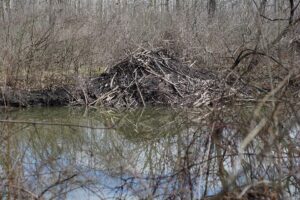 Imagine nature’s ultimate engineers working quietly, tirelessly, and entirely for free. Beavers, long seen merely as destructive rodents, are becoming increasingly recognized for their remarkable ability to transform streams and floodplain wetlands, creating vibrant ecosystems bursting with biodiversity.
Imagine nature’s ultimate engineers working quietly, tirelessly, and entirely for free. Beavers, long seen merely as destructive rodents, are becoming increasingly recognized for their remarkable ability to transform streams and floodplain wetlands, creating vibrant ecosystems bursting with biodiversity.
Recent studies have unveiled the hidden value of these beaver-modified landscapes. Beaver dams slow water flow, reducing erosion and sediment transport downstream. This not only stabilizes streambanks but also enhances water quality by trapping pollutants and sediment.
Moreover, beaver-engineered wetlands act like giant natural sponges. During heavy rains, they absorb excess floodwater, mitigating flood risks downstream. In drought conditions, these wetlands release stored water slowly, maintaining stream flow and supporting wildlife and plant communities long after other water sources have dried up.

The ecological bounty does not end there. Beaver habitats are biodiversity hotspots, attracting various aquatic insects, birds, fish, amphibians, and mammals, including bat populations, which have been in rapid decline since 2014 due to habitat loss and the highly fatal fungal disease known as “white-nose syndrome” (WNS).
Additionally, bats thrive in these areas due to increased insect populations and the creation of ideal feeding and roosting sites provided by standing dead trees and varied vegetation around beaver ponds. Recognizing these benefits, environmental managers and ecologists are turning to “nature-based solutions,” harnessing the beaver’s instinctive behaviors to restore degraded ecosystems and enhance climate resilience.
It’s time we appreciate these furry architects for their vital role in our ecosystems. The next time you see a beaver dam, remember it’s more than sticks and mud; it can be a gateway to ecological renewal and resilience.
